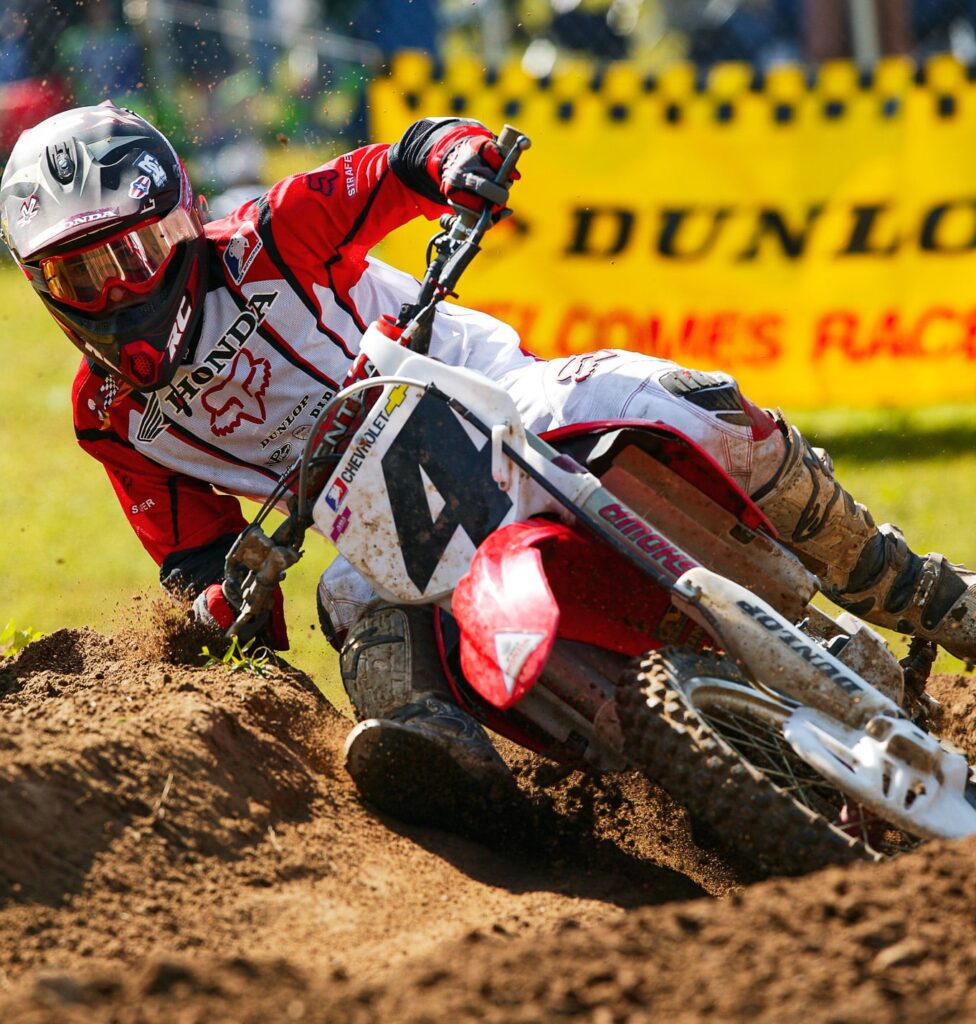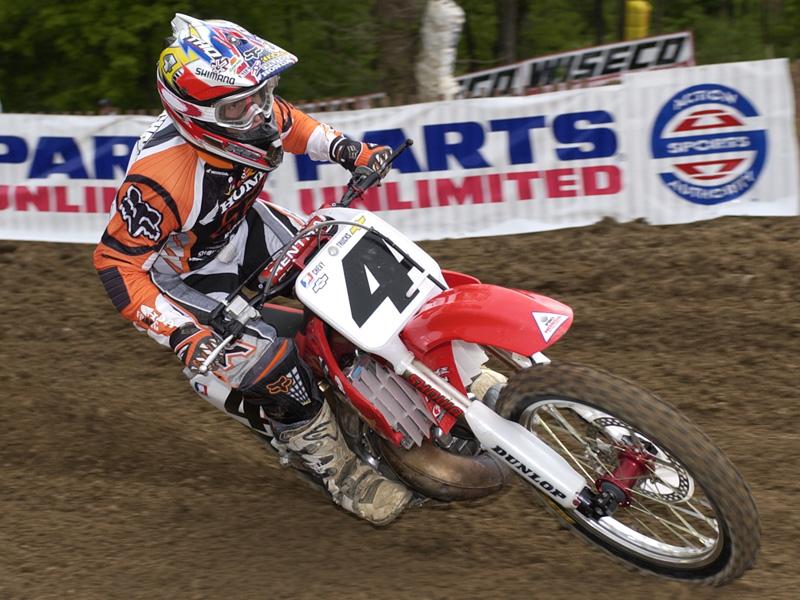In 2002, Ricky Carmichael made a significant move to Honda, sparking controversy among fans. Despite initial skepticism, once Carmichael began winning, his popularity soared once again.
Mid-season, Honda provided an opportunity to experience the works CR250R two-stroke bike that Carmichael rode to clinch the Supercross championship that year. This renowned bike had been showcased at the Hard Rock Cafe since Carmichael’s victory in Vegas.
Additionally, enthusiasts had the chance to gain insights from Honda’s Chad Watts and Erik Kehoe, who served as mechanic and manager respectively for Team Universal Studios Honda. This allowed a peek into Carmichael’s preferences and the notable differences between his indoor and outdoor bikes.
Undoubtedly, Ricky Carmichael’s transition to Team Honda proved fruitful. Despite early setbacks including a first-round Did Not Finish (DNF) and a tough fall at Pontiac, Carmichael excelled throughout the Supercross season, securing 11 main victories, 12 heat wins, and his second 250cc indoor title.

He continued his dominance into the outdoor season, winning 10 motos consecutively. Honda celebrated its first indoor title since McGrath’s triumph in 1996. The break between Mt. Morris and Southwick provided an opportunity to test Carmichael’s championship bike.
Carmichael’s initial experience with the Honda bike at his home Supercross track in Georgia was remarkable. He set a personal lap record on his very first lap, attributing the bike’s stability to enabling him to achieve higher speeds with less effort.
Chad Watts noted Carmichael’s adjustment of the bike’s handlebars upon its return from Georgia, illustrating the rider’s meticulous attention to detail in optimizing his setup. Despite using bars associated with Jeremy McGrath, Carmichael preferred a different orientation, reflecting his distinct riding style.

Carmichael’s teammate in 2002 was Sebastian Tortelli. Similar to former Team Honda star Jean-Michel Bayle, Carmichael tended to stick with settings that worked for him, demonstrating consistency in his approach across various tracks and races. Test pilots faced challenges in adapting to Carmichael’s bike at Glen Helen’s Supercross track, highlighting the unique setup tailored to his preferences.
The article delves into the intricacies of Carmichael’s bike setup, particularly focusing on the unusual handling characteristics and specialized components tailored to his riding style. Notably, Carmichael’s bike featured a powerful engine producing approximately 56 horsepower, complemented by precise tuning and specialized components to accommodate his aggressive riding style.
The article details various modifications and adjustments made to enhance the bike’s performance and reliability, showcasing the meticulous attention to detail by Carmichael and his team.
The transition from Supercross to Motocross required adjustments to the bike’s setup, including modifications to the suspension, engine tuning, and gearing to suit the different demands of outdoor racing. The article concludes by introducing new products in the motocross industry, offering insights into innovative gear and accessories for riders.

